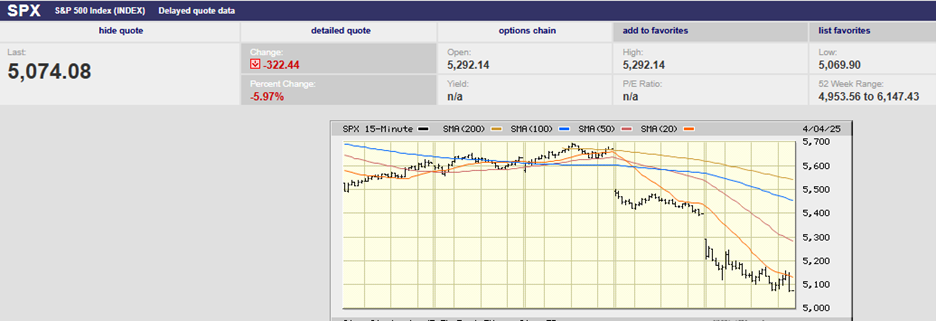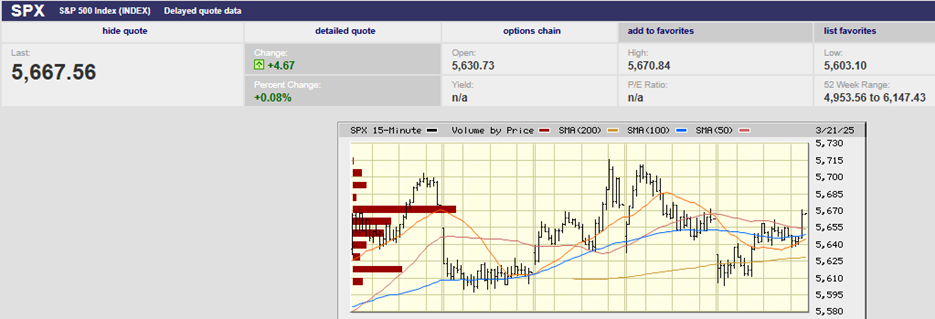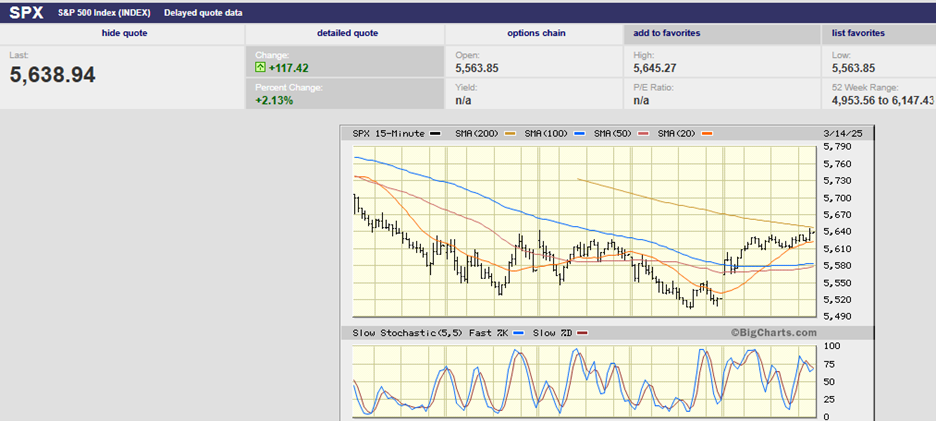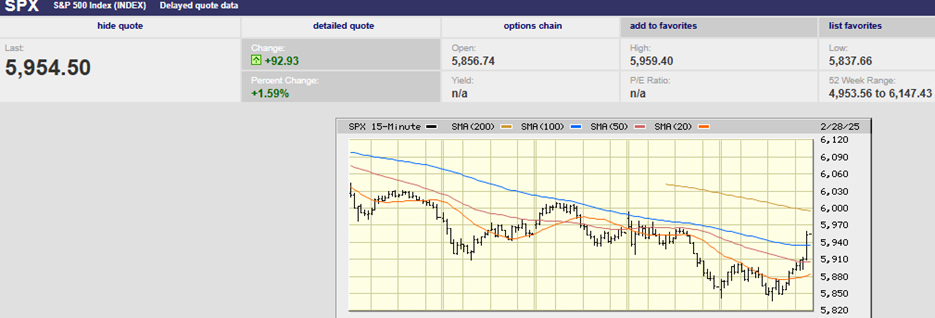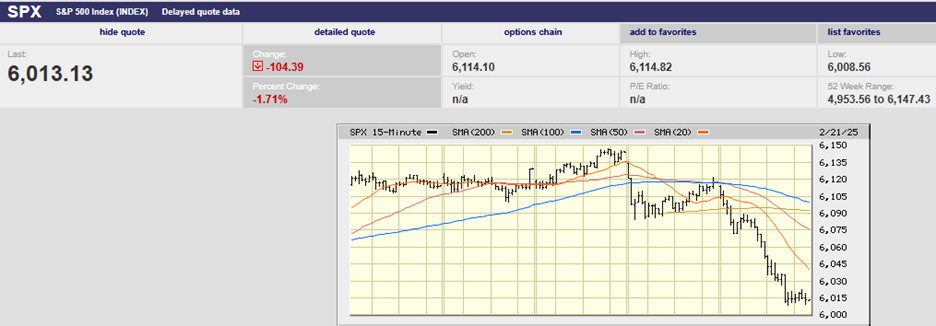Biases can lead to greater losses

Market Update
The S&P 500 finished down 1% on the week to close at 4108.54. The Nasdaq fell 1% and the Dow fell 0.9%. The weekly win streak stopped at one. The S&P hit resistance near 4200 as expected. The resistance around 4200 may be a significant obstacle to any further advances. The index peaked at 4158.34 last Friday, 4168.34 Tuesday, 4166.54 Wednesday, 4177.51 Thursday and 4142.67 Friday. The stochastic oscillator is signaling a short-term sell. The market looks ready to go lower in the coming weeks. A retest of the 3810.32 low looks likely.
But maybe not before the S&P makes one more run to its 50-day moving average, which sits at 4250. The BofA Bull & Bear Indicator moved to “extreme bearish,” last week. It is its lowest reading since June 2020, according to Barron’s. The bearish reading is at levels that often signal short-term bottoms. In fact, the indicator has been flashing a buy signal since March. Bank of America strategist Michael Hartnett is expecting the S&P to rally to 4200 before failing. He is advising shorting the index if it climbs to 4400. Hartnett believes central bank tightening around the world is the reason the rally will fail.
Fixed income is not cooperating either. The 10-year Treasury yield peaked at 3.13% on May 6th. It fell to 2.75% by May 27th but has risen back to 2.96% by Friday. Quantitative tightening is most likely responsible for rising yields. Although the stronger-than-expected jobs report Friday didn’t help bonds either.
Quantitative tightening began June 1st. The law of Supply and Demand applies. Demand for Treasuries and mortgage-backed bonds is reduced since the Fed is no longer buying. Falling demand means falling prices and rising yields. The iShares U.S. Aggregate Bond Index (AGG) is down 9.15% year-to-date. The Vanguard Long-term Treasury Bond Index ETF (VGLT) is down 20.05% year-to-date. Bonds have been a disaster for investors, and it promises to get worse before it gets better.
The Federal Reserve is expected to raise the federal funds rate by half a point in June, July, and September. Quantitative tightening is expected to shrink the Federal Reserve’s balance sheet by more than $3 trillion over the next three years. It’s starting in June at a $47.5 billion run rate. It will double to $95 billion by September. The Fed’s balance sheet will shrink at a $1.1 trillion annual rate once up to full speed. Quantitative easing was implemented to support asset prices. Logic dictates that quantitative tightening will have the opposite effect. No one knows the exact impact of the tightening program. It’s only been tried one other time, from 2017 to 2019, and in a more limited fashion.
Norwood Economics is not expecting a recession in 2022. We do think a recession is increasingly likely in 2023. The stock market should avoid a serious bear market in 2022. It is more likely that a full-blown bear market doesn’t appear until closer to the next recession. It remains a stock pickers market. Good companies are on sale!
Economic Indicators
The Case Shiller national home price index rose 20.6% in March. Home price appreciation should slow down soon due to rising mortgage rates. The Chicago PMI rose to 60.3 in May from 56.4 the month prior. The S&P Global U.S. manufacturing PMI was 57.0 for May. The ISM manufacturing index was 56.1% in May up from 55.4% the prior month. Numbers above 50 show growth. The current numbers indicate manufacturing is still strong. Meanwhile, the ISM services index in May was 55.9% down from 57.1% in April.
Job openings in April were 11.4 million down from 11.5 million in March. It’s still a big number indicating a strong jobs market. Initial jobless claims fell to 200,000 from 211,000, also indicating a strong jobs market. As well, nonfarm payrolls in May grew a stronger than expected 390,000 after rising 436,000 the prior month. Average hourly earnings rose 0.3% in May the same as the prior month. Unit labor costs rose 12.6% in Q1 up from 11.6% the prior quarter. Labor costs threaten to squeeze profit margins and negatively impact earnings growth.
Still, the economic data last week reveal an economy that is growing, albeit slower than last year’s unsustainable 6.9% rate. The Federal Reserve's quantitative tightening will slow the economy further. How soon and how much are the 64,000-dollar questions. There is a rising chance of a recession in 2023.
Losses are Losses
I’ve had several people tell me recently that losses aren’t losses if they don’t sell. They are wrong of course. Losses are losses. Whether you sell or not, your investments are showing a loss. Those losses must be made up before any profits are earned. The losses-aren’t-losses camp is confusing staying invested with staying in an inferior investment. Investors hang on to bad investments for several reasons.
Loss aversion is one reason. Many investors hold onto bad investments for far too long because they don’t want to admit that the losses are real. It is easier to pretend that the losses aren’t losses if the investor doesn’t sell. It is easier to avoid admitting that they made a mistake. It is easier to avoid the pain associated with the loss. The result is that they continue to own an underperforming stock, bond, mutual fund, or portfolio. They would be better off admitting the mistake and selling.
Commitment bias is another reason for hanging on to an investment long after a change is warranted. An investment may no longer be the best option, yet we keep it anyway. We continue to support our decisions by holding the investment even when new evidence suggests that it isn’t the best course of action.
Anchoring is yet another bias that causes us to hold on too long to an investment. Anchoring is the subconscious use of irrelevant information as a fixed reference point. The purchase price of a stock or mutual fund for instance. Or the value of your portfolio at the start of the year. These anchors can influence your decisions on whether to make changes or not, even though they are irrelevant. The purchase price doesn’t matter. The value of your portfolio at the start of the year doesn't matter. What does matter is whether the current investment or portfolio will be the best investment going forward. It is the only thing that matters.
You should only keep your investment if it promises the highest risk-adjusted rate of return going forward. Otherwise, you should sell it and invest in whatever does promise to provide the highest risk-adjusted return. You will make back your losses more quickly if you do. There is even a tax benefit to be had if the investment is in a non-qualified account. Selling an investment for a loss generates a tax benefit that can offset a capital gain.
Trying to time the market is a mistake. Hanging on to a bad investment instead of replacing it with a better one is also a mistake. Knowing when to sell a poor investment and replace it with one that promises a better risk-adjusted return isn’t easy. The best investors do it though.
Regards,
Christopher R Norwood, CFA
Chief Market Strategist

